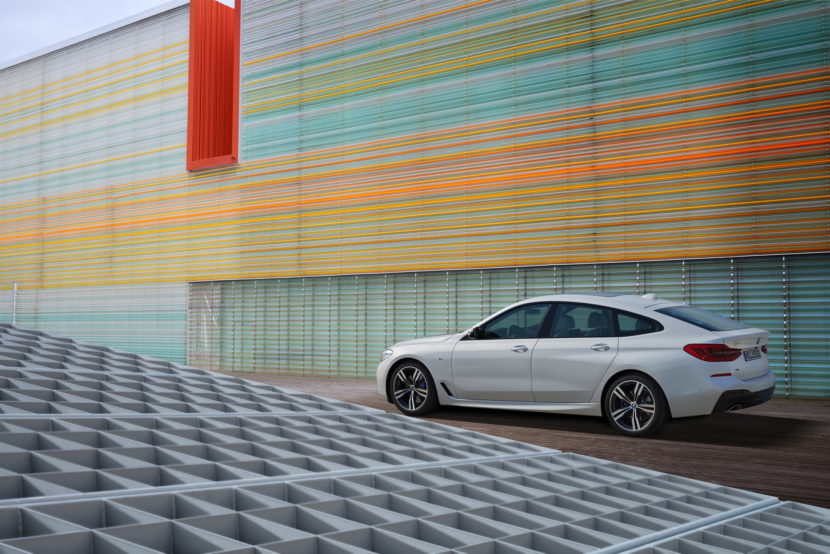Now that the 6 Series GT is officially out, I think we can all agree it’s a step forward from its predecessor, the 5 Series GT. I’m not referring only to the obvious improvement in terms of exterior design, but also to the technical side of things, the new model also brings new technologies to the table as well as more standard features. The 6 GT will have things like Dakota Leather included as standard, but also the BMW Personal CoPilot system that is offered as standard for the first time on a BMW model.
The driver assistance system brings a multitude of functions to the table, made possible through the use of cameras, radars, and ultrasonic sensors that monitor the vehicle’s surroundings. The Active Driving Assistant includes Active Blind Spot Detection, Lane Departure Warning, Daytime Pedestrian Protection, Frontal Collision Warning w/City Collision Mitigation, Speed Limit Info, and Cross-traffic alert rear. The optional Driving Assistant Plus Package also adds Active Cruise Control with Stop & Go, Active Lane Keeping Assistant with Side Collision Avoidance, Traffic Jam Assistant, Evasion Aid and Cross-traffic alert front.
The latest generation ACC with Stop & Go is now operational in a speed range from 0 – 130 mph and is capable of braking the vehicle to a standstill. If the vehicle has been placed into standby mode by pushing the resume button on the steering wheel, the BMW 6 Series GT can automatically start moving again up to 30 seconds after coming to a full-stop. The system’s sensors can now register two vehicles ahead providing a smoother operation.
The Active Lane Keeping Assistant and Traffic Jam Assistant – also active at speeds between 0 and 130 mph – represent another step towards semi-automated driving. It uses road markings and the vehicles driving ahead as a means of orientation and works with the driver to help keep the vehicle in the detected lane with steering assistance. Designed as a hands-on system, it provides up to 50 seconds of hands-off time steering support. A sensitive hands-on-wheel detection recognizes contact even when only a few fingers briefly touch the wheel.
The latest generation Active Blind Spot Detection system now works from approximately 15 to 130 mph and Lane Departure Warning operates from approximately 40 to 130 mph. Lane Departure Warning, alerts the driver if the vehicle is straying out of its lane unintentionally by causing the steering wheel to vibrate. Active Blind Spot Detection monitors maneuvers when changing into a different lane and, if a risk of collision is detected, activates a visual signal in the side-view mirror and vibrates the steering wheel, encouraging the driver to steer the vehicle back into its original lane.
Vehicles equipped with the available Active Driving Assistant Plus additionally include Active Lane Keeping Assistant with Side Collision Avoidance and Evasion Aid, which assist the driver with corrective steering. The Side Collision Avoidance system (range approximately 40 – 130 mph) provides corrective steering intervention in situations where a side collision is imminent. In addition, Lane Departure Warning and Active Blind Spot Detection are also supported by the Active Lane Keeping Assistant through corrective steering intervention as part of the warning concept. Evasion Aid assists if a quick lane change is required at speeds between 25 – 100 mph, for example when the vehicle in front brakes aggressively, the evasion aid supports the necessary evasive steering action initiated by the driver.
Corrective steering support during an evasive maneuver results in less vehicle instability, assisted by Dynamic Stability Control (DSC). While executing the maneuver, the evasion aid also uses information from the vehicle’s sensor systems to check how much unobstructed space is available around the vehicle. At speeds over 100 mph, the system no longer provides actual steering support and instead focuses on maximizing vehicle stability.








































































